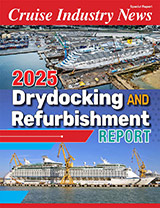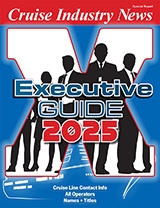Carnival Corporation bas raised its net yield guidance for 2004 to being up five to seven percent from its previous forecast of a two to four percent increase – “largely due to the weakness of the U.S. dollar and to a lesser extent due to strengthened booking levels during the Wave Season.”
In its 10-K filing this week, Carnival also said that company-wide bookings were running 59 percent higher since the beginning of January than during the same period last year, which was adversely impacted by the build up to the war in Iraq.
Carnival said the increase in bookings was significantly above the company’s 17.5 percent capacity increase for 2004.
However, with bookings up sharply and with Carnival attributing the increase in yields mostly to the weak dollar, it means that pricing is still an issue.
And, despite the improved outlook, Carnival is keeping its guidance at $2.02 for the year, up only $0.04 from its previous guidance of $1.98. For QI, Carnival expects earnings to be in the range of $0.21 to $0.22 up only slightly from its previous guidance which was in the range of $0.18 to $0.20.
Thus, while the trend is positive, Carnival’s core recovery is relatively modest so far.
Analysts raised their price-targets as high as $61 compared to the trading price of $45.15 at press time and a 52-week high/low of $46.30 – $20.24.
In its filing, Carnival also said it is “possible that some more of our older ships may be sold or retired during the next three to four years, thus reducing the size of our fleet over this period.”
This would most likely be the Holiday (1985), the Celebration (1987), the Royal Princess (1984), the Prinsendam (1988), and possibly the Costa Tropicale (1982).
In terms of “risk factors,” Carnival listed the political and economic climate, competition throughout the vacation market, overcapacity, etc., and also the “lack of attractive port destinations for our cruise ships that could reduce net revenue yields and income.”
Carnival went on to say that “attractive port destinations, including ports that are not overly congested with tourists, are major reasons why our customers choose a cruise versus an alternative vacation option. The inability to continue to maintain and increase our ports of call could adversely affect yields and income.”
Carnival also identified its onboard revenue sources as services including, but not limited to, casino gaming, bar sales, gift shop sales, entertainment arcades, shore excursions, art auctions, photo sales, spa services, bingo games and lottery tickets, video diaries, snorkel equipment rentals, Internet and telephone usage, vacation protection programs and promotional advertising by merchants located in its ports of calls.



